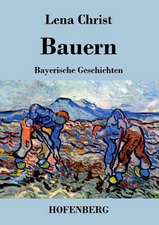The Tesseract
Autor Alex Garlanden Limba Engleză Paperback – aug 2007
| Toate formatele și edițiile | Preț | Express |
|---|---|---|
| Paperback (2) | 100.42 lei 3-5 săpt. | +10.08 lei 4-10 zile |
| Penguin Books – aug 2007 | 100.42 lei 3-5 săpt. | +10.08 lei 4-10 zile |
| Riverhead Books – 31 dec 1999 | 127.68 lei 3-5 săpt. | +63.56 lei 4-10 zile |
Preț: 100.42 lei
Nou
Puncte Express: 151
Preț estimativ în valută:
19.22€ • 19.99$ • 15.87£
19.22€ • 19.99$ • 15.87£
Carte disponibilă
Livrare economică 25 martie-08 aprilie
Livrare express 08-14 martie pentru 20.07 lei
Preluare comenzi: 021 569.72.76
Specificații
ISBN-13: 9780141031781
ISBN-10: 0141031786
Pagini: 352
Dimensiuni: 129 x 198 x 21 mm
Greutate: 0.25 kg
Editura: Penguin Books
Colecția Penguin
Locul publicării:London, United Kingdom
ISBN-10: 0141031786
Pagini: 352
Dimensiuni: 129 x 198 x 21 mm
Greutate: 0.25 kg
Editura: Penguin Books
Colecția Penguin
Locul publicării:London, United Kingdom
Notă biografică
Alex Garland was born in London in 1970. He has written two novels, The Beach (1996), The Tesseract (1998) and an illustrated novella, The Coma (2003), in collaboration with his father. He has also written two screenplays, 28 Days Later (2002) and Sunshine (2007).
Recenzii
"THE TESSERACT has the traits of a thriller, but it's also a love story, a character study, a portrait of life among Manila's street kids, even an experiment in narration...a feverish, affecting, altogether captivating story....What really makes THE TESSERACT so gripping is the author's dazzling performance as a storyteller--not the bloody climaxes per se but the innovative techniques and deft changes of pace with which they are related. This is one of those rare novels that can be read for thrills but also taken apart and examined the way a jeweler does a fine watch. Garland also lavishes his characters with quirks that ring true, outbursts of human oddity that transform a moment that most authors would rush past into something memorable...all but flawless, a tour de force of brilliant narration and psychological acuity." --The Washington Post
"Virtuosic" --The New York Times Book Review
"THE TESSERACT feels.... like a Quentin Tarantino or John Woo movie, seasoned with some Graham Greene. It is as thoroughly assured a performance as T and just as violently entertaining. Taut, nervous and often bloody, THE TESSERACT is a more experimental work than The Beach: elliptical and Rashomon–like in structure, where The Beach was linear, cinematic in its effects, where The Beach was more conventionally literary. . . . Mr. Garland not only does a completely convincing job of sketching in these characters’ lives in a series of quick, deftly drawn strokes, but he also fluently cuts back and forth between their stories, building suspense the way a film editor does, even as he is tying his disparate heroes’ tales together with dozens of overlapping motifs. . . . As he demonstrated in The Beach, Mr. Garland is a natural at orchestrating violent set pieces with deadpan panache, but he also proves in this novel that he can create odd, oddly sympathetic people with unexpected inner lives. . . . the novel’s suspense [has] a human cost and caculation...Garland is...persuasive a storyteller...gifted a writer...He has written a powerful if flawed novel, a novel that...reconfirms his prodigious and diverse talents.” --Michiko Kakutani, The New York Times Book Review
“[C]omplex and intriguing...subtle fiction [that] has nothing to do with the higher math and a lot to do with good old-fashioned storytelling about big, old-fashioned themes—the mysteries of love and violence and death, the strange workings of fate. . . . THE TESSERACT marks a significant departure from, and growth since, The Beach...Like a tesseract, it is composed of three dimensions that, in the end, inevitably imply a larger and more significant fourth. . . The book is so cunningly constructed that you can’t discuss any of these three narratives in too much detail without giving away the connections. Suffice it to say that each story is delicately observed and ingeniously linked to the others. . . . I’m fairly sure that this book, like its author, is the thing itself.” --Daniel Mendelsohn, New York Observer
"Virtuosic" --The New York Times Book Review
"THE TESSERACT feels.... like a Quentin Tarantino or John Woo movie, seasoned with some Graham Greene. It is as thoroughly assured a performance as T and just as violently entertaining. Taut, nervous and often bloody, THE TESSERACT is a more experimental work than The Beach: elliptical and Rashomon–like in structure, where The Beach was linear, cinematic in its effects, where The Beach was more conventionally literary. . . . Mr. Garland not only does a completely convincing job of sketching in these characters’ lives in a series of quick, deftly drawn strokes, but he also fluently cuts back and forth between their stories, building suspense the way a film editor does, even as he is tying his disparate heroes’ tales together with dozens of overlapping motifs. . . . As he demonstrated in The Beach, Mr. Garland is a natural at orchestrating violent set pieces with deadpan panache, but he also proves in this novel that he can create odd, oddly sympathetic people with unexpected inner lives. . . . the novel’s suspense [has] a human cost and caculation...Garland is...persuasive a storyteller...gifted a writer...He has written a powerful if flawed novel, a novel that...reconfirms his prodigious and diverse talents.” --Michiko Kakutani, The New York Times Book Review
“[C]omplex and intriguing...subtle fiction [that] has nothing to do with the higher math and a lot to do with good old-fashioned storytelling about big, old-fashioned themes—the mysteries of love and violence and death, the strange workings of fate. . . . THE TESSERACT marks a significant departure from, and growth since, The Beach...Like a tesseract, it is composed of three dimensions that, in the end, inevitably imply a larger and more significant fourth. . . The book is so cunningly constructed that you can’t discuss any of these three narratives in too much detail without giving away the connections. Suffice it to say that each story is delicately observed and ingeniously linked to the others. . . . I’m fairly sure that this book, like its author, is the thing itself.” --Daniel Mendelsohn, New York Observer





















